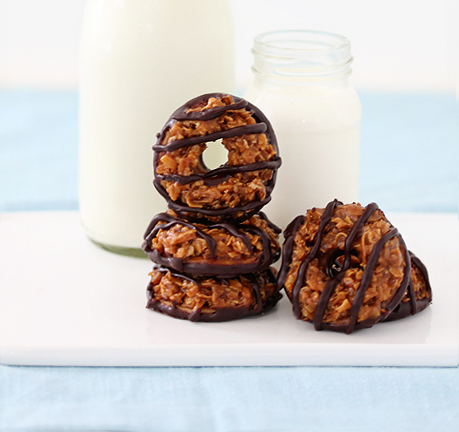Over the past few years I've watched the "pumpkin" trend become huge. Pumpkin lattes, pumpkin cookies, pumpkin beer, pretty much anything that someone can add the flavor of pumpkin to becomes pumkin-y as soon as it hits fall. I tend to shrug at the whole thing. I don't have anything against fall or pumpkins; I'm just not a huge fan of anything when a fake flavor is added to it. That, and I tend to prefer the other "fall flavor". Apples.
When I was a kid, we had an apple tree in my yard. I remember picking apples with my sister, attempting to climb the tree, me trying to stand on her shoulders to reach the top... It really is amazing that neither of us ended up in the emergency room because of that thing. But the apples that grew on it were amazing, and we always made plenty of applesauce from the apples that we picked.
Living in Boston, many years later, I tend to be conflicted with regards to the fall past time of apple picking. On one hand, getting the apples directly from the tree tend to give you the best possible fruit; the apples that you pick will last for months in the refrigerator; the cider, and cider donuts at Honeypot Hill are amazing; and it's one of the few times when it is socially acceptable, as an adult, to climb trees (a skill which I am quite pleased to still posses). On the other hand, it is more expensive, and because it's a "thing" that all the folks in the city do as a fall activity, I kind of want to tell everyone there that I'm not just a tourist, that I've worked on "real" farms; that I'm not the type who will run screaming away from a mosquito, having never seen one before. The tipping point is a good friend of mine who grew up in Hawaii. He gets a huge kick out of being able to pick an item of food off a tree and just eat it directly.
Being close to Halloween, I decided to stick with the theme of candy. One of my favorite types of candy to make is gummy candy. It's easy to make, and easy to adjust the flavor profile. Also, it allows me to make them into all sorts of fun shapes. It's one of the great things about the prevalence of silicone ice cube trays these days is that they work equally well for the making of candy. I may be slightly obsessed, and have several of them in all sorts of fun shapes. For anyone with geek tendencies, there are several fun ones at Thinkgeek.
 |
| So much better than store bought gummy bears! |
Apple Cider Gummy Candy
- 6 Cups Apple Cider
- 1 1/4 Cups Granulated Sugar
- 6 Envelopes gelatin
- 1 1/4 Cups Water
- Optional: cinnamon, sugar
Reduce the apple cider until there is only 1 cup, by simmering in a 2 quart saucepan. This is the slowest part of the whole recipe. If you boil the apple cider, it will give a different flavor due to caramelizing the sugars. I try to do this part the day before, because it needs to cool before adding gelatin. The good side of having to spend a long time simmering apple cider is that the entire house will smell amazing.
After the cider has been reduced and cooled, place it in a bowl and sprinkle the gelatin on top, to allow it time to bloom while cooking the syrup (if you want to add cinnamon, now would be the time to do so).
 |
| Always be careful when making candy, as serious burns can occur. |
 |
| Candy setting in silicone ice cube trays |
Pour mixture out to cool, in either a greased 8x8 inch pan, or into silicone molds, and allow to cool to room temperature.
If the mixture was set in a pan, then either slice the gummies into squares, or use cookie cutters to cut out shapes. If silicone molds were used, then the candies can simply be popped out of the molds. At this point, they will still be sticky, and you have a choice. If you set the candies out to finish air drying, the edges will be a little tough, like a swedish fish, but will still be soft and chewy in the center. If you want to keep the entire piece soft and chewy, you can roll each in a coat of granulated sugar. Personally, I like to maintain the details from my molds, and will let them air dry just a little before packing them in tupperware. While they will get tougher over time if they are not coated in sugar, they never seem to last long enough to make that an issue.









